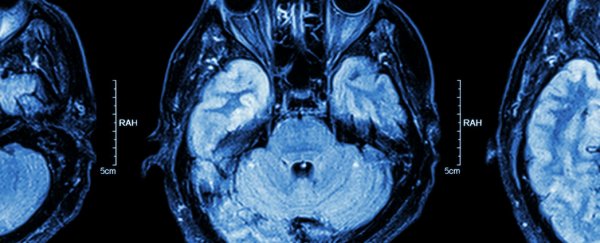If you know anything about psychiatry - even if it's just exaggerated scare stories from the world of movies - you'll know that doctors have long been experimenting with the effects of electrical impulses on the brain.
While electroconvulsive therapy (ECT) doesn't have the best reputation thanks to films like One Flew Over The Cuckoo's Nest and Requiem For A Dream, one of its successors is showing a serious amount of potential for the way mental health problems could be treated in the future: and it's all due to a pacemaker in the brain.
The process is called deep brain stimulation or DBS, and it involves two electrodes inserted deep into the brain, modulating a regular electrical pulse to a specific region. Researchers say it has the ability to stabilise emotions and thoughts, and if early tests can be verified, its use could become much more widespread.
While DBS has been around since the 1980s, it's been gathering momentum in recent years as scientists begin to understand more about its effects.
As Erene Stergiopoulos reports for Motherboard, DBS was used as a treatment for Parkinson's and chronic pain before it was adapted to help people suffering from depression: the first such experiment was run in 2003. In the initial study of the potential benefits of DBS, four out of the six patients experienced major reductions in their symptoms in the space of six months, and the improvements lasted for a year. Those findings aren't conclusive, but the resulting paper has been used as one of the foundations of DBS research in the 10 years since.
One of the largest and longest-running DBS research centres is in Toronto, Canada, where 58 patients are currently being treated, and newer studies are now capitalising on this wealth of data to consider whether DBS could eventually become a recognised treatment method rather than a last (and still experimental) resort. There is some evidence that the procedure could make the body more receptive to other medical treatments as well.
It's not a particularly refined operation at the moment: two electrodes are inserted through small burr holes in the skull, then attached to pulse generators implanted underneath the collarbone. These implants can stay in place for years until the battery runs out.
Some of the latest thinking suggests that while problems like depression and anorexia may seem separate, they may have certain factors in common, and DBS could be used to target and ease those pain points in the brain. Scientists are also applying for approval to go ahead and use DBS to treat strokes, according to Shirley S. Wang at The Wall Street Journal - they're hopeful that the pacemaker could also help healthy regions of the brain compensate for damaged ones.
